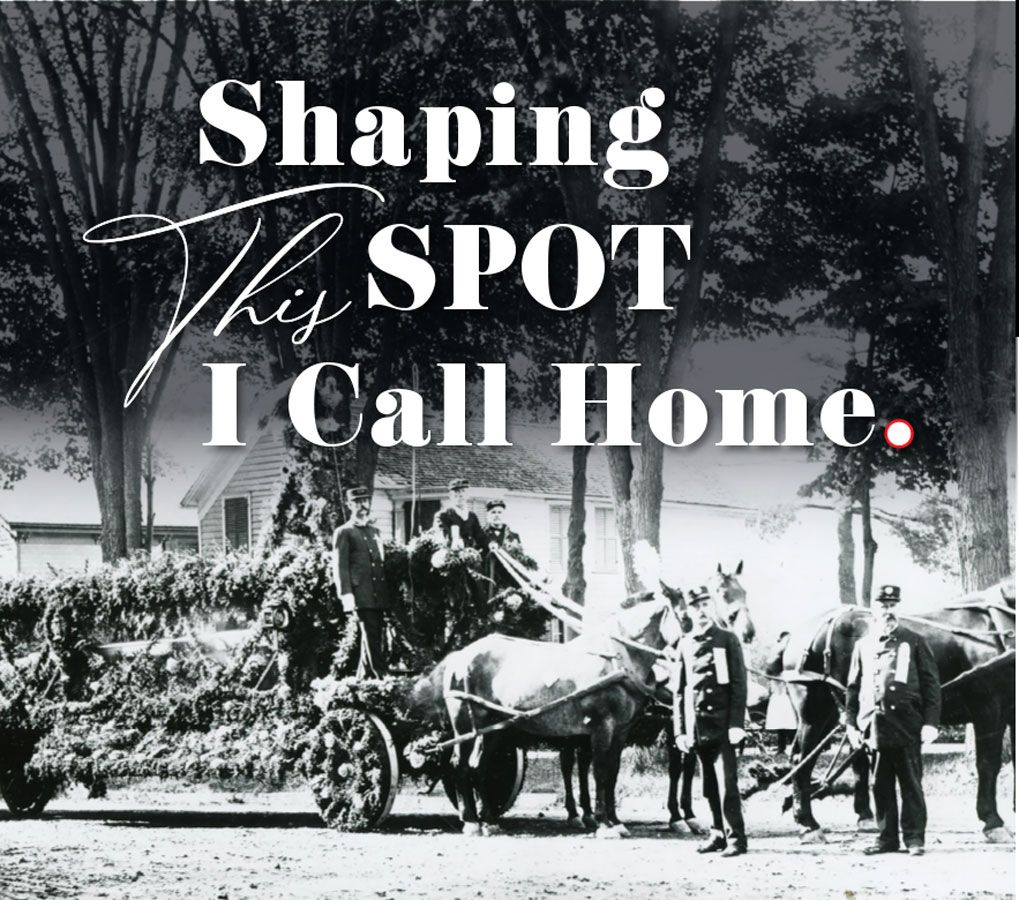
Franklin Smith was the originator of Floral Fetes which he witnessed in his extensive travels. Saratoga held them yearly from 1894 to 1902. They were revived twice - in 1924 and for our 150th citywide celebration in 2013. Pictured here is the D&H railroad engine, one of many businesses in the festival.
FRANKLIN W. SMITH
Written by Carol Godette | Photos provided (Unless Noted)
I find myself sometimes taking this spot I call home for granted.
Walks through historic High Rock Park or picturesque Congress Park, choosing from numerous concerts at SPAC and Cafe Lena's, taking in one of our countless downtown festivals, sipping coffee at a favorite outdoor cafe, and shopping in our vibrant downtown are so ingrained in my daily life that I need to take pause. Countless citizens are responsible for my good fortune. But the historian in me would like to pay homage to an overlooked former resident, Franklin Webster Smith.
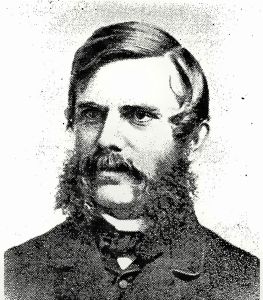
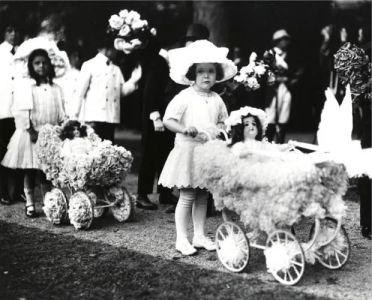
(left) Lithograph of Smith- Franklin Webster Smith(1826- 1911) as a younger man before his arrival in Saratoga Springs.
(right) Doll carriage-Residents of all ages participated in the popular floral fetes. Photo courtesy of George S. Bolster Collection
Smith summered in Saratoga from 1889-1906. He has left a lasting impact in his mere 17 years of residence. After three trips to Pompeii, Italy, he chose Saratoga as the site of the Pompeia, a cultural museum and full-scale reproduction of the House of Pansa, a Roman nobleman's house destroyed by the eruption of Mt. Vesuvius in 79 A.D. The building remains at 260 Broadway today, with the original atrium intact.
He believed Saratoga's summer season was too short and opposed its focus on racing and gambling. Instead, Smith set out "to devise attractive, harmless entertainments for the multitude."
In 1894, he cleverly implemented a floral fete festival, a four-day event held at the beginning of September, to encourage tourists to extend their time in Saratoga. An estimated 25,000 to 35,000 people viewed the extensive parade that took viewers' breath away.
Every major newspaper in the country reported on the spectacle. I especially liked the Asbury Park Press' description, "The floral fete's procession was novel and unique and two miles long. At its head was a great number of bicycles festooned and trimmed with flowers. Then followed a large cavalcade of men and women on horseback with tasteful floral decorations, a great number of floats illustrative of historical incidents, and hundreds of carriages... Both sides of Broadway for more than a mile were packed with people, all wearing or carrying bouquets: and as the floats passed each other in countermarch, there was a such 'battle of flowers' that the road bed was strewn with them."
Afterward, leaders awed by the event's success, invited Smith to address fellow Saratogians on his other ideas to improve our community.
Franklin Smith was not a native but brought "stranger value," meaning how an outsider's perspective can contribute to a community's growth and development. Our city historian Mary Ann Fitzgerald loves to use this term, first coined by folklorist Vaughn Ward. It is the perfect descriptor for Boston born and bred Franklin Smith.
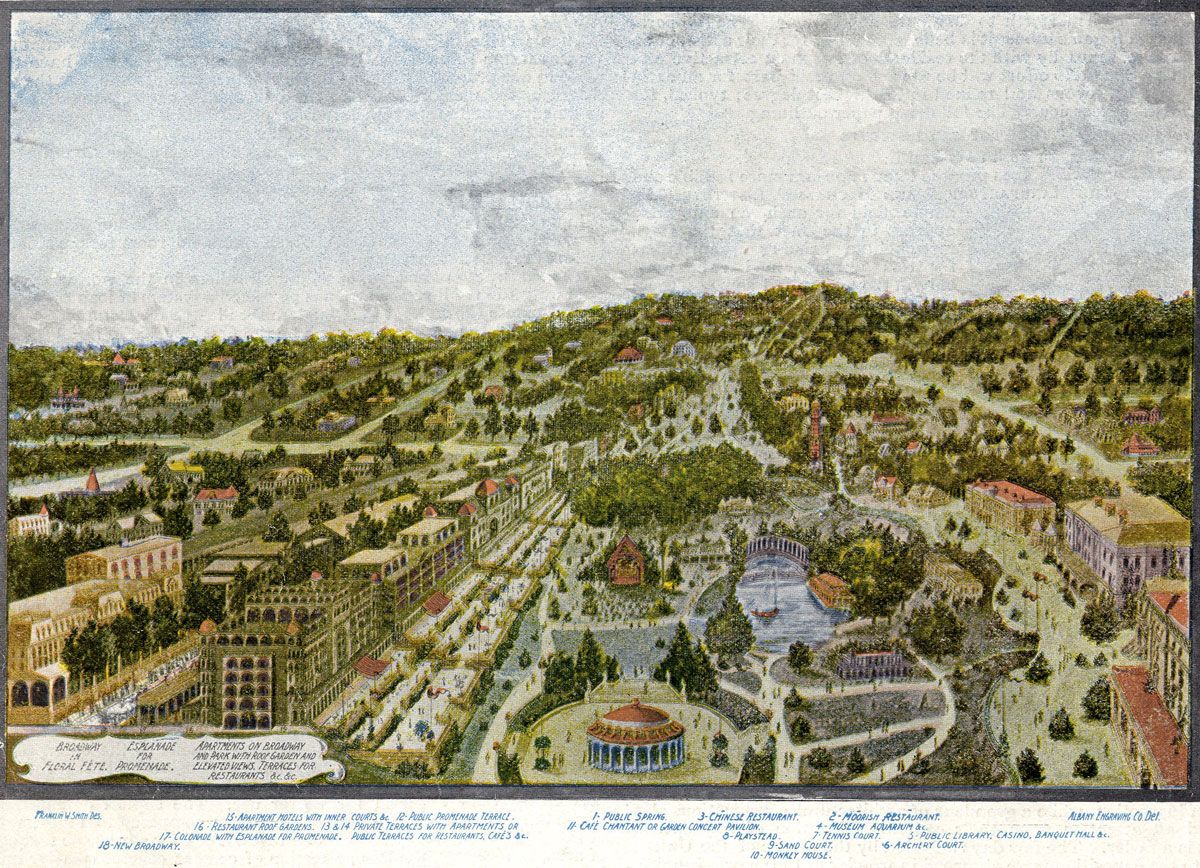
Franklin Smith’s proposed grand plan for “A Greater Saratoga.” He was enamored with Spain and built a Moorish home in Saint Augustine, thus the Moorish Restaurant- clearly a concept Saratoga wasn’t ready for.
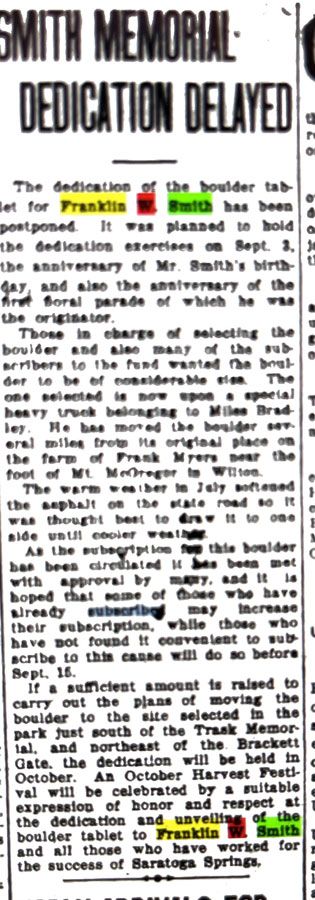
Article- From the August 28, 1917 edition of the Saratogian.
Smith called for New York State legislation, like the European government protection afforded to their springs. He cautioned against "the possible exhaustion of the life of these springs by the extraction and sale of carbonic acid gas in great quantities from numerous wells being driven."
To extend the August season from June to October, he sought to establish intellectual entertainment "during the balmy days of June and the golden summer of early July when the great hotels are vacant."
Smith was aware of numerous "Social and Literary Clubs" nationwide. He contacted them and proposed they converge in Saratoga each June "at reduced rates of travel, with notice of the presence of those famous in their respective fields of study, with prepared festivities in the open air and verdure of spring."
Unfortunately, Saratoga was not Smith's only focus of reformation. He also had grand schemes to reconstruct Washington, D.C., which financially overextended him. By 1906, he was bankrupt and was forced to sell the Pompeia, the Hall of Ancients in Washington D.C.; and his vast collection of literature and artifacts obtained during his travels. He died in obscurity in 1911 at his sister's New Hampshire home.
Smith was born ahead of his time; unfortunately, only some of his visionary ideas had come to fruition. Had he lived another fifteen years, he would have seen the establishment of a park system. A 1917 Saratogian editorial credited his forward thinking by writing:
"Well, if the spirit of Franklin W. Smith has eyes to see today, it may look down upon the fulfillment of almost every feature of his dream, which sensible men and women of fifteen years ago labeled crazy. The springs are restored, great bathhouses have been built, parks have been created, and the city is marching along in much the same paths that Mr. Smith laid out for it."
In 1917 a group of citizens wanted to memorialize Smith for his efforts and planned an inscribed plaque to be dedicated in his honor in Congress Park. To my chagrin, this never happened.
But I'd like to imagine that Franklin W. Smith's spirit was among the 40,000 spectators in 2013 when we recreated his floral fete for our 150th Racing Celebration.
I applaud his "stranger value" when I enjoy the culture of SPAC, our beautiful parks, or sip coffee in Mrs. London's European-style cafe. Someday, I may even work on getting his Memorial Plaque installed.